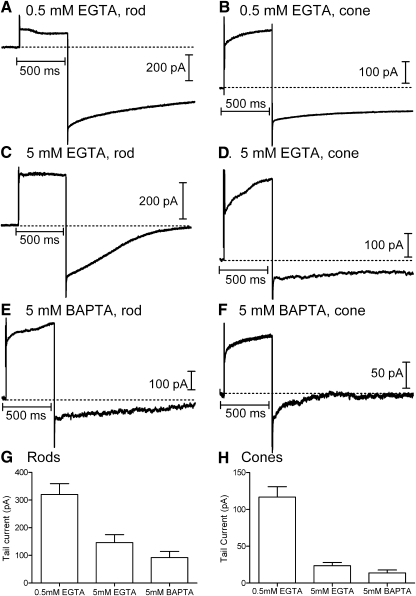Fig. 2.
Effects of the diffusible Ca2+ buffers EGTA and BAPTA on depolarization-evoked Ca2+-activated chloride [Cl(Ca)] tail currents in rods and cones. Rod and cone photoreceptors were depolarized by application of a test step from −77 to −17 mV for 500 ms. Peak calcium-dependent chloride current [ICl(Ca)] activation was measured 15 ms after the depolarizing step to avoid recording contamination from the capacitative transient. Depolarization-evoked tail currents arising from the activation of ICl(Ca) persisted in both rods and cones in the presence of 0.5 mM EGTA (A and B), 5 mM EGTA (C and D), and 5 mM BAPTA (E and F). G: mean tail current amplitude measured in rods with Ca2+ buffering provided by 0.5 mM EGTA (316.0 ± 35.0 pA, n = 24), 5 mM EGTA (120.7 ± 21.4 pA, n = 14), and 5 mM BAPTA (78.7 ± 14.6 pA, n = 23). Tail currents were measured 15 ms after the end of the step. Measurements were made ≥10 min after patch rupture. H: tail current amplitudes in cones with Ca2+ buffering provided by 0.5 mM EGTA (123.3 ± 12.4 pA, n = 17), 5 mM EGTA (38.1 ± 8.64 pA, n = 8), and 5 mM BAPTA (27.0 ± 6.70 pA, n = 14).

